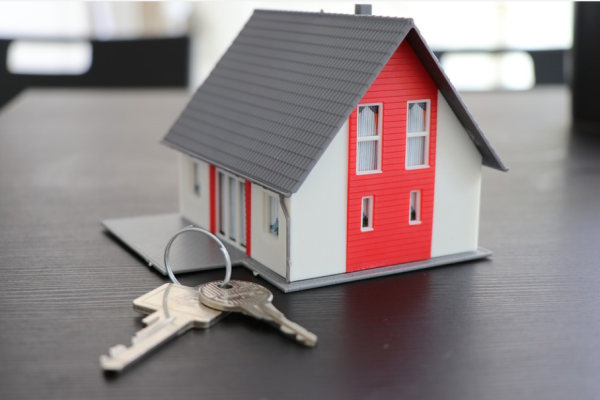Selected
- Details
- Written by Grant Broadcasters
- Category: Selected
- Hits: 143

The 33-year-old, who took 10-119 on Saturday, joined England off-spinner Jim Laker (1956, 10-53 against Australia) and India leg-spinner Anil Kumble (1999, 10-74 against Pakistan) in picking up all wickets in an innings.
"Welcome to the club #AjazPatel #Perfect10. Well bowled! A special effort to achieve it on day one and two of a test match," spin bowling great Kumble, who took 619 Test wickets for India, said on Twitter.
It was the first time a bowler has taken 10 wickets in an innings in a Test away from home, although, romantically, Patel was playing his first Test in the city of his birth.
Ajaz, whose parents immigrated to New Zealand in 1996, added six wickets to the four he took on the first day on Friday to finish with figures of 10-119.
"To be honest, it's pretty surreal," he said.
"I don't think you ever believe you're going to achieve something like that. So to be able to do it in my career, it's pretty special."
Ajaz said he had yet to comprehend the magnitude of his achievement and thanked Kumble for his message.
"These things don't sink in until later," he later told reporters. "It's brilliant for me, my family and my wife.
"You spend a lot of time away from home as a cricketer and I'm just grateful to God for this, this occasion.
"Very illustrious group to be a part of. Great to see his (Kumble) message and his kind words. Humbled and fortunate to be in that company."
The left-arm spinner, who started his career as a fast bowler, extracted sharp turn and bounce from the pitch and carried the New Zealand bowling on his broad shoulders to restrict the hosts' first innings total to 325.
After picking up the wickets of Wriddhiman Saha and Ravichandran Ashwin in his first over on Saturday, the stocky spinner returned after the lunch interval to take the remaining four to wrap up India's innings.
As Rachin Ravindra pouched a skier from India's number 11 batter Mohammed Siraj to confirm the fall of the final wicket, Ajaz went down on one knee with a clenched fist before being hugged by his teammates.
He also received a standing ovation from the Indian team in the dressing room and the sparse crowd at the ground overlooking the Arabian Sea.
"I'm very fortunate and I guess the stars have aligned for me to have an occasion like that here in Mumbai," Ajaz said.
"To be born here and then come back here and achieve something like that, it's pretty special."
© RAW 2021
Image: Blackcaps
- Details
- Written by Grant Broadcasters
- Category: Selected
- Hits: 179

He has won the Bathurst 1000 from last, now Chaz Mostert will start the Great Race at the front of the grid.
The Walkinshaw Andretti United star claimed pole after producing the fastest-ever time around the famed Mount Panorama circuit during the top-10 shootout.
Mostert will be aiming to secure his second win in the 161-lap classic as he partners with popular veteran Lee Holdsworth for Sunday's race.
No matter what happens, it will take something extraordinary to top the dramatic events of 2014 when Mostert was driving a Ford.
Mostert entered Bathurst 1000 folklore by snatching victory after starting the race from 25th and last on the grid to salute as a 22-year-old.
This time he will have Holdsworth in his corner for a shot at glory.
In his 18th-straight appearance in a Bathurst 1000, Holdsworth knows this is his best chance to be crowned champion.
"I certainly think we've got one of the better cars out there so we're in a pretty good position," Holdsworth said.
"We're both comfortable in the car and we've both confidence in it.
"It's not necessarily the fastest car that wins around here though."
Defending champions Shane van Gisbergen and Garth Tander will start from seventh but did manage to secure last year's win from fourth.
Van Gisbergen's Red Bull Ampol teammate - and soon-to-be boss - Jamie Whincup will be back in 11th on the grid after missing qualifying for the shootout in his final drive before retirement.
© AAP 2021
Image: Chaz Mostert
- Details
- Written by NSW News
- Category: Selected
- Hits: 130

- Details
- Written by Grant Broadcasters
- Category: Selected
- Hits: 135

While the brakes are on Australia's runaway property boom, the jury is out on whether the thus-far dramatic shift will affect everyone equally.
Australian house price growth fell in December to 1.3 per cent - its slowest rate since January, according to CoreLogic's monthly index.
However the main impact was with the nation's centres of population, with Sydney's median house price increasing one per cent to $1.36 million and Melbourne's 0.6 per cent to $987,000.
For capital cities across the board, the percentage was 1.1.
Yet in the regions, where the WFH revolution and cheap credit have combined to install a marked affordability advantage, growth for December was 2.2 per cent.
The maths is simple but the big question is whether the doubling trend is here to stay.
CoreLogic's annual numbers for the regions paint a bullish picture, with Australia's 25 largest non-capital markets achieving record increases.
Its October update revealed 24 of them enjoyed double-digit growth for the previous 12 months while more than half topped 20 per cent. Seven regions posted a lift of more than 30 per cent.
The data provider's research director Tim Lawless says local factors were influential but common key drivers of the growth included population change, low interest, higher household savings and relatively affordability.
Perhaps more tellingly, he says the major catalyst for the demographic shift, working from home, "looks to have some degree of permanency post-COVID".
In theory, at least, if people continue to base themselves in regional locations and work remotely, real estate prices there will continue to surge.
Australia's best-performed region of the moment is the NSW Shoalhaven and southern highlands, boasting an annual house value growth rate of 35.9 per cent.
Richmond-Tweed in northern NSW (32.8 per cent) and Queensland's Sunshine Coast (32.3 per cent) aren't far behind.
The top performing regional areas for the year to October were all coastal or lifestyle markets generally within a two-hour commute of a capital city.
"These areas fit within the broad trend where demand has surged for lifestyle properties that offer a blend of liveability and commutability," Mr Lawless said.
The longevity of the boom will depend on affordability, although as more companies formalise hybrid work those areas within commuting distance of major capitals are likely to remain the most highly sought after.
"If housing values across regional parts of the country continue to outpace the capitals, the obvious outcome will be that regional markets lose their affordability advantage," Mr Lawless said.
This is already taking shape in popular coastal markets like Byron Bay where median house values are $1.7 million and Noosa on the Sunshine Coast, at $1.2 million.
Across the unit market, 18 regions recorded at least a 10 per cent rise, while 12 jumped more than 20 per cent.
Queensland's Wide Bay region was best performed, recording a rate of 29.2 per cent, followed closely by the Sunshine Coast (29.1 per cent).
© AAP 2021
Image: https://pixabay.com/photos/house-key-property-security-4516175/ (free image)
Page 114 of 191